Several Indian media outlets have become a global joke for publishing fake news claiming "Pakistan is invading Afghanistan this week," while experts from American think tanks said that what these media have done sounds pretty ridiculous but it is not the first time this happens.
Actually, Indian media has a long story of creating fake news which have been refuted repeatedly.
Observers told the Global Times that after an investigation, it could be concluded that some of the disinformation was spread "under the control of Indian officials or government agencies."
Self-entertaining
The starter of making fake news is India's right-wing channel Republic TV, which on Monday quoted exclusive footage from Hasti TV, an Afghan TV channel in the UK, saying that Pakistani air force attacked Panjshir valley in Afghanistan.
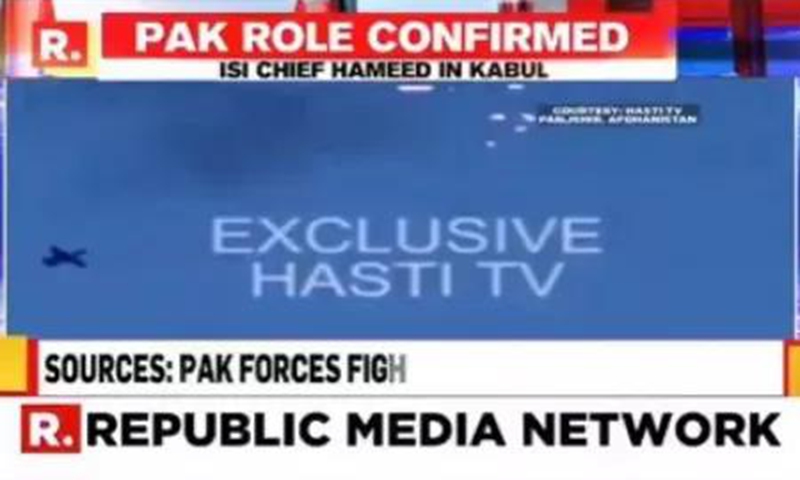
Photo: Screenshot of Republic TV
The report claimed that the anti-Taliban National Resistance Front of Afghanistan spokesperson "had also been killed."
Afterwards, Times Now Navbharat, Zee Hindustan and other outlets also aired the footage, claiming that Pakistan had bombed Panjshir.
Republic TV could not stop airing this clip with the headline "Exclusive Hasti TV" on screen.
However, fact check website Boom soon found that the footage aired by Indian media is from the video game Arma-3.
Some netizens had also pointed out this ridiculous mistake.
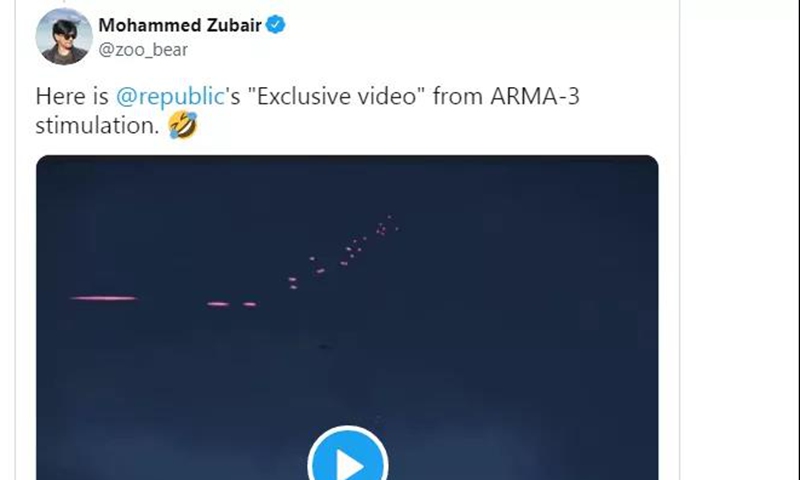
Photo: Screenshot of Twitter
Meanwhile, India Today aired a clip of an American F-15 jet flying in Wales calling it the "first visuals of a fighter jet, allegedly belonging to Pakistan, hovering over Panjshir Valley in Afghanistan."
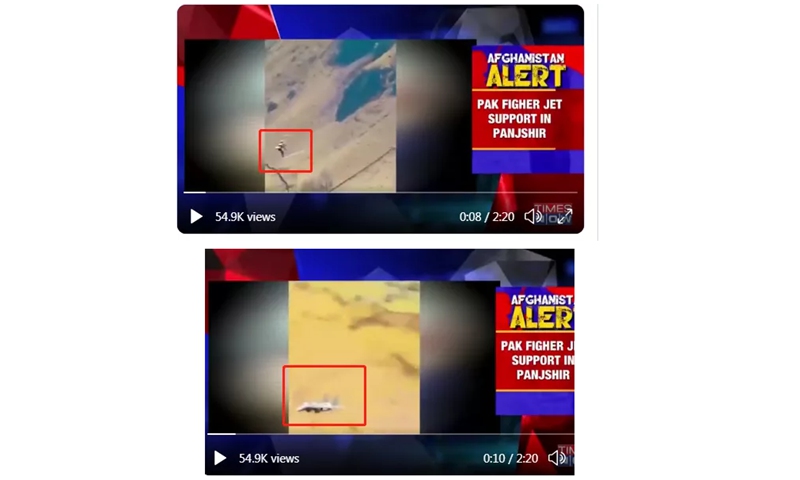
Photo: Screenshot of India Today
According to the media report, the anchor of India Today called this a "full-fledged Pakistani invasion" of Afghanistan.
This fake news was busted by George Allison, editor at the UK Defense Journal.
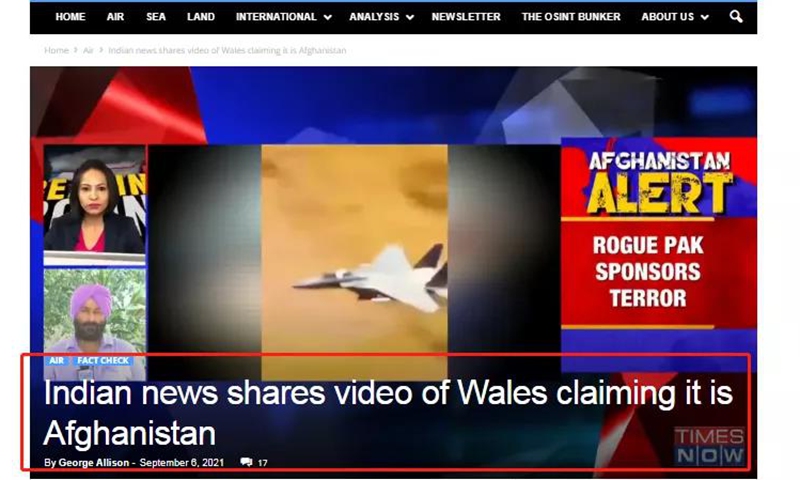
Photo: Screenshot of UK Defense Journal
On Monday, India Today also showed in its news report a picture claiming a Pakistani F-16 was shot down.

Photo: The picture shown in India Today's report
But according to the US site military.com, this photo was actually from an accident of an US F-16 Fighting Falcon jet that crash-landed "during a routine training flight near the Arizona-California border" on April 24, 2018.

Photo: Screenshot of Military.com
Regarding Indian media concocting fake news, Pakistan's The Express Tribune pointed out that "Brazen fake news leave Indian media red-faced."
The above behavior of the Indian media has been ridiculed by foreign peers, and criticized by domestic reporters.
Saba Naqvi, an Indian journalist, commented on Twitter that the "defining story of the day confirms that clowns run these channels. But they are dangerous clowns."
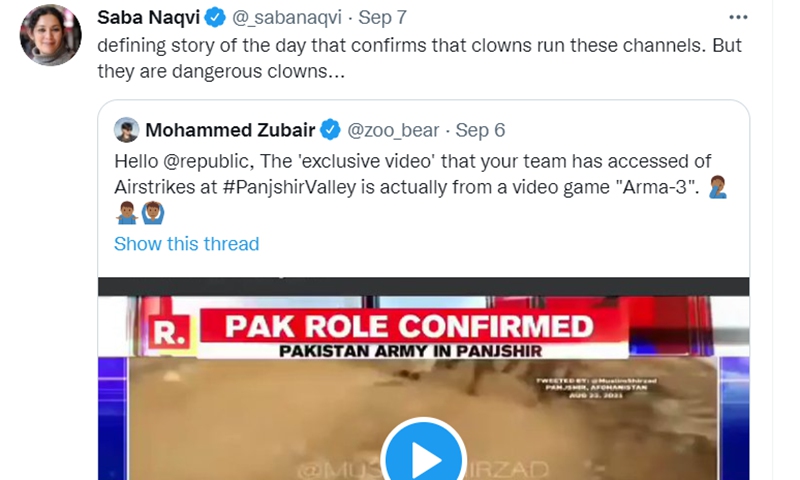
Photo: Screenshot of Twitter
"This may sound crazy for the uninitiated and yet it is not the first time. It happened during the Balakot crisis too, back in 2019," Michael Kugelman, Deputy Director of the Asia Program and Senior Associate for South Asia at the Wilson Center and leading specialist on Afghanistan, India, and Pakistan and their relations with the US, wrote on Twitter.
Fake reports on Galwan Valley clash
Indian media has a long history of producing fake news.
Some Indian media reported in June 2020 that sources they had reached speculated that the number of casualties of the Chinese side exceeded 40.
However, the claim was immediately refuted by Zhao Lijian, the spokesperson of Chinese Foreign Ministry, during a press conference on June 23 saying that "I can tell you responsibly that this is false information."
Mysterious rumor makers
According to a report by BBC in December 2020, EU DisinfoLab, a non-governmental organization based in Brussels, released an investigation report titled Indian Chronicles which revealed an immense network organization spreading false information in India.
The network was designed primarily to "discredit Pakistan internationally" and influence decision-making at the UN Human Rights Council (UNHRC) and the European Parliament, EU DisinfoLab said.
In the report, the researchers uncovered 265 pro-Indian sites operating across 65 countries, and traced them back to a Delhi-based Indian holding company, the Srivastava Group (SG).
The investigation found that there were direct links between SG and at least 10 UN-accredited NGOs, along with several others, "which were used to promote Indian interests and criticize Pakistan internationally."
The investigation revealed that the operation led by SG began in late 2005.
"There is no evidence the network is linked to India's government but it relies heavily on amplifying content produced on fake media outlets with the help of Asian News International (ANI), India's largest wire service and a key focus of the investigation," according to BBC.
Established in 1971, ANI describes itself as "South Asia's leading multimedia news agency, with more than 100 bureaus in India, South Asia and across the globe."
EU DisinfoLab found at least 13 instances where ANI published mostly anti-Pakistan and sometimes anti-China editorials by Members of the European Parliament (MEPs), originally published on EU Chronicle, one of the fake news sites linked to SG.
The EU DisinfoLab report said: "The actors behind the operation hijacked the names of others, tried to impersonate regular media such as the EU Observer [...] used the letterhead of the European Parliament, registered websites under avatars with fake phone numbers, provided fake addresses to the United Nations and created publishing companies to print books of the think-tanks they owned."
The investigation also showed that there were several hundred pro-Indian interventions by the non-accredited NGOs which were repeatedly given the floor at the UNHRC on behalf of the accredited organizations pursuing the same agenda of slandering Pakistan.
Muhammad Zamir Assadi, a journalist with Independent News Pakistan, told the Global Times that the report actually revealed that stakeholders in India have repeatedly violated international norms and values of mature diplomacy and a friendly and good-neighborly attitude.
Looking back at the disinformation campaigns conducted in India in the past, Assadi said it was safe to assume that the disinformation was spread under the control of Indian officials or government agencies.













